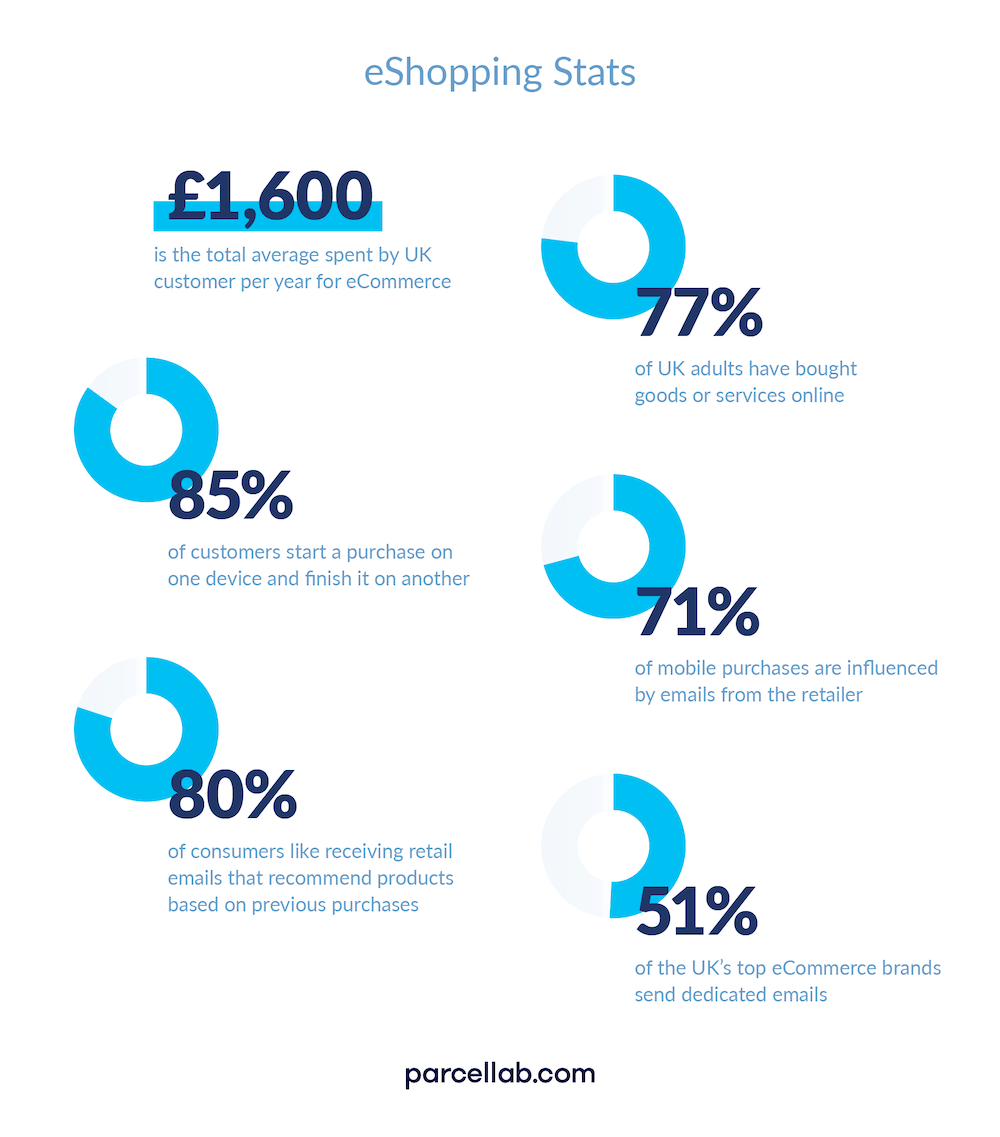Back when bricks and mortar retailers (like recent casualty, Debenhams) were thriving, returns were usually a sign of dissatisfaction and a roadblock for online retailers. Now, however, they’re – literally – part and parcel of the shopping experience.
With so many consumers living busy lives, online retail is thriving. But in the absence of being able to ‘try before they buy’ many shoppers rely on returns to get the goods they need In fact, 67% of online shoppers will check a returns page before making a purchase.
As a result, retailers need to ensure their own returns policies match customer expectations. But what do customers really want? What does the ideal returns policy look like?
Pains & Gains of Online Retail Returns
Online retail is big business here in the UK. Globally, the UK has the highest retail e-commerce sales as a percentage of total retail sales (15.6%) – ahead of China, Germany, and the US – and ranks second for average revenue per shopper (£1,600).
UK E-Commerce market insights (Source)
While eCommerce eliminates many of the traditional pain points of in-store retail – queuing, heavy bags, searching high and low for the right size/colour/make – it does lack some of the more positive benefits; such as being able to talk to a sales specialist in person; trying on clothing; and, of course, easily returning goods.
However, when you look at it, the issues that consumers have with eCommerce and returns are not all that different from the issues they have with high street stores. It’s just that things like the cost and inconvenience of taking something back has become replaced with the cost and inconvenience of posting it back.
Essentially, online retailers need to offer a good overall customer experience – and need to consider returns as an additional part of the purchase process.
Long Term Loyalty Through Hassle Free Returns
The reasons customers make returns are numerous and don’t necessarily reflect on product quality or any fault on the vendor’s part. However, regardless of the actual reason, the returns process itself needs to fulfil certain criteria in order to maintain customer happiness and a better overall experience. For example, no less than 58% of customers want a hassle-free no questions asked returns policy. Essentially this means giving them carte blanche to do what they want with purchases and simply hand them back.
Admittedly, this poses a risk on the retailer’s part, but think of this as ‘playing the long game’. A flexible returns experience fosters long term loyalty. And if your company is easy to do business with, even in the face of something contentious, word will spread.
Remember, the customer is always right (even when he’s not).
Who Should Pay for Returns?
Customers don’t want to pay for returns – especially if they’ve already shelled out on postage and packaging. And who can blame them? Online retailers usually have to take one for the team and cover the cost.
But how much do returns cost retailers? Well, according to The Financial Times – a whopping £60 billion a year. The same story reports that returns can cost companies three times more to process in the supply chain than the first time around, significantly eating into their margin.
Is there a way to overcome this? Perhaps. Clothing is by far the most bought item online, so one way to avoid ‘intentional returns’ – the habit of over ordering to return items in different sizes – could be to provide detailed sizing information, as many retailers are already doing.
Similarly, as the FT article outlines, more retailers are offering customers ‘premium’ memberships; offsetting the cost of returns with discounts and benefits; or simply charging more for larger return items – such as furniture or sports equipment. There are ways to recoup the costs, but loss leaders can often pave the way to increased profits.
The reasons customers make returns are numerous and don’t necessarily reflect on product quality (Source)
Prioritise ‘Low Effort’
While the likes of ASOS, John Lewis, and Amazon might be better placed to absorb the cost of returns than smaller shops, let’s not forget that convenience is important too. A low effort experience is just as important as pricing.
But low effort doesn’t just apply to the actual ‘sending back’; it can also apply to the whole process. For example, retailers can compensate customers by sending pre-printed address designed for returns; or they might provide email advice on how to send back items – rather than relying on customers to read the small print. A courier collection service would work well too – to spare customers the pain of taking packaged items back to the post office: enduring the inevitable lunchtime queues.
Offering a seamless, customer-focused returns policy is no minor inconvenience for online retailers. But handling returns correctly, and making the process transparent and user-friendly, is a feather in the cap for customer experience and ultimately has a lasting impact on brand reputation. After all, why do people shop online in the first place? Because it’s fast, convenient, easy, and often cheaper. So it’s only natural that returns policies should follow suit.
Our returns experience platform helps you create a consistent and seamless customer experience throughout the returns journey.
Written by




